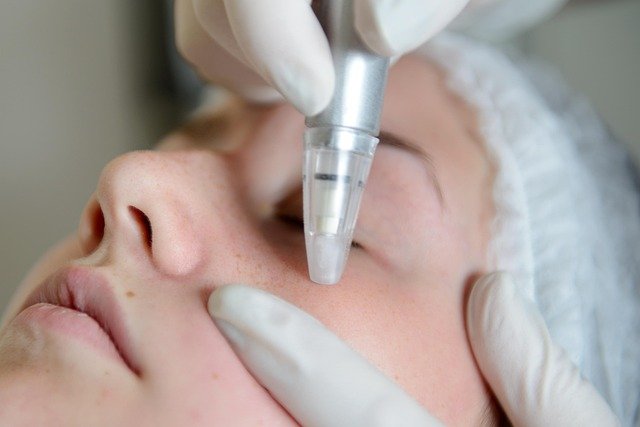Refresh Your Skin: Complete Guide to Laser Rejuvenation
Discover how laser skin rejuvenation can restore a smoother, more even complexion. This comprehensive guide explains how lasers stimulate collagen, the skin concerns they treat, the main laser types, what to expect during and after treatment, estimated costs, and tips to maintain results. Learn whether laser therapy could be the right option for reducing wrinkles, sun damage, scarring, and uneven texture.

Laser skin rejuvenation offers a precise way to improve skin tone, texture, and signs of aging by using focused light energy to trigger the skin’s natural repair processes. Whether you’re aiming to soften fine lines, fade sunspots, or smooth acne scars, modern laser therapies provide tailored options that balance effectiveness with downtime.
How laser therapy improves skin
Laser treatments work by delivering controlled thermal energy to targeted layers of the skin. That intentional micro-injury stimulates a healing response: fibroblasts produce new collagen and elastin, and cell turnover accelerates. Over the weeks and months after treatment this remodeling reduces wrinkles, improves surface texture, evens pigmentation, and tightens lax skin. Different lasers treat different depths and concerns, which makes customization important for predictable outcomes.
Common concerns treated with lasers
Laser rejuvenation addresses a wide array of dermatologic issues. Typical applications include:
- Fine lines and wrinkles around the eyes, forehead, and mouth
- Sun damage, age spots, and pigmented lesions
- Uneven skin tone and rough texture
- Acne scars, surgical scars, and other textural irregularities
- Enlarged pores
- Persistent redness and some forms of rosacea
Because many technologies can be combined or adjusted, laser therapy is often chosen when several skin issues need improvement concurrently.
Types of laser treatments and how they differ
Lasers are grouped by how intensely they interact with the skin:
-
Ablative lasers: These remove the outer skin layer and heat deeper tissue to provoke significant collagen production. Ablative treatments (for example CO2) typically deliver the most dramatic results but also require the longest recovery.
-
Non-ablative lasers: These heat the dermis without stripping the surface epidermis. They stimulate collagen with less downtime and lower immediate risk, but multiple sessions are usually needed to achieve comparable improvement.
-
Fractional lasers: Fractional technology creates micro-injuries in a grid-like pattern, leaving surrounding tissue intact. Fractional devices can be either ablative or non-ablative; their fractional approach speeds healing while still promoting robust remodeling.
A qualified clinician will choose the most suitable device based on your skin type, concerns, and tolerance for recovery time.
What to expect during a session
Before treatment your skin will be cleansed and typically numbed with a topical anesthetic. The practitioner will pass the laser handpiece over the treatment area, delivering pulses of light according to the chosen protocol. Sessions vary in length—most fall between 30 minutes and two hours depending on the size of the area and the depth of treatment.
Sensation during the procedure ranges from warmth to brief stinging, sometimes likened to a flicking or a light snap sensation. Cooling devices or intermittent pauses are commonly used to increase comfort.
Recovery and aftercare
Immediately after treatment you can expect redness, swelling, and sensitivity similar to a sunburn; more aggressive ablative procedures may produce crusting or peeling that lasts several days to weeks. Non-ablative options usually result in milder redness and a shorter recovery window.
Follow-up care typically includes gentle cleansing, broad-spectrum sunscreen, and a barrier-repair moisturizer. Avoiding direct sun exposure and following your provider’s guidance about topical agents (retinoids, vitamin C, etc.) will support healing and maximize results.
How long results last and maintenance
Laser-induced collagen remodeling can create visible improvement that lasts months to years, but results are not permanent. The duration depends on the type of laser used, the original condition treated, your skin care habits, and ongoing exposure to sun and other environmental factors. Many people schedule maintenance sessions once or twice yearly to sustain benefits. Daily sunscreen use, a healthy skincare routine, and lifestyle measures that limit sun damage will prolong outcomes.
| Treatment Type | Provider | Cost Estimation |
|---|---|---|
| Non-ablative Fractional Laser | Fraxel | $1,000 - $2,000 per session |
| Ablative CO2 Laser | Lumenis | $3,000 - $6,000 per session |
| IPL (Intense Pulsed Light) | Sciton | $400 - $600 per session |
| Erbium Laser | Sciton | $2,500 - $4,000 per session |
Prices, rates, or cost estimates mentioned in this article are based on the latest available information but may change over time. Independent research is advised before making financial decisions.
Choosing a provider and final considerations
Selecting a board-certified dermatologist or an experienced, credentialed practitioner is critical. They can evaluate your skin type, discuss realistic expectations, outline potential risks, and suggest a customized treatment plan. Discuss preexisting conditions, prior skin procedures, and medications to ensure safety.
Laser skin rejuvenation can be a highly effective route to refreshed, clearer skin when chosen and performed appropriately. Discuss goals with a specialist to determine which laser approach best fits your needs and how to combine procedural care with an ongoing skincare strategy to maintain results.
This article is for informational purposes only and should not be considered medical advice. Please consult a qualified healthcare professional for personalized guidance and treatment.






